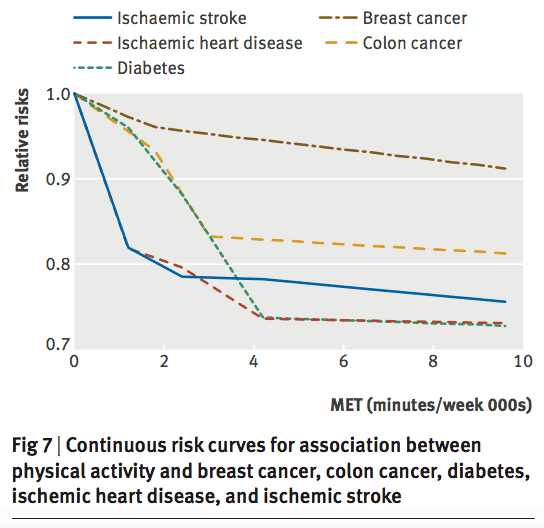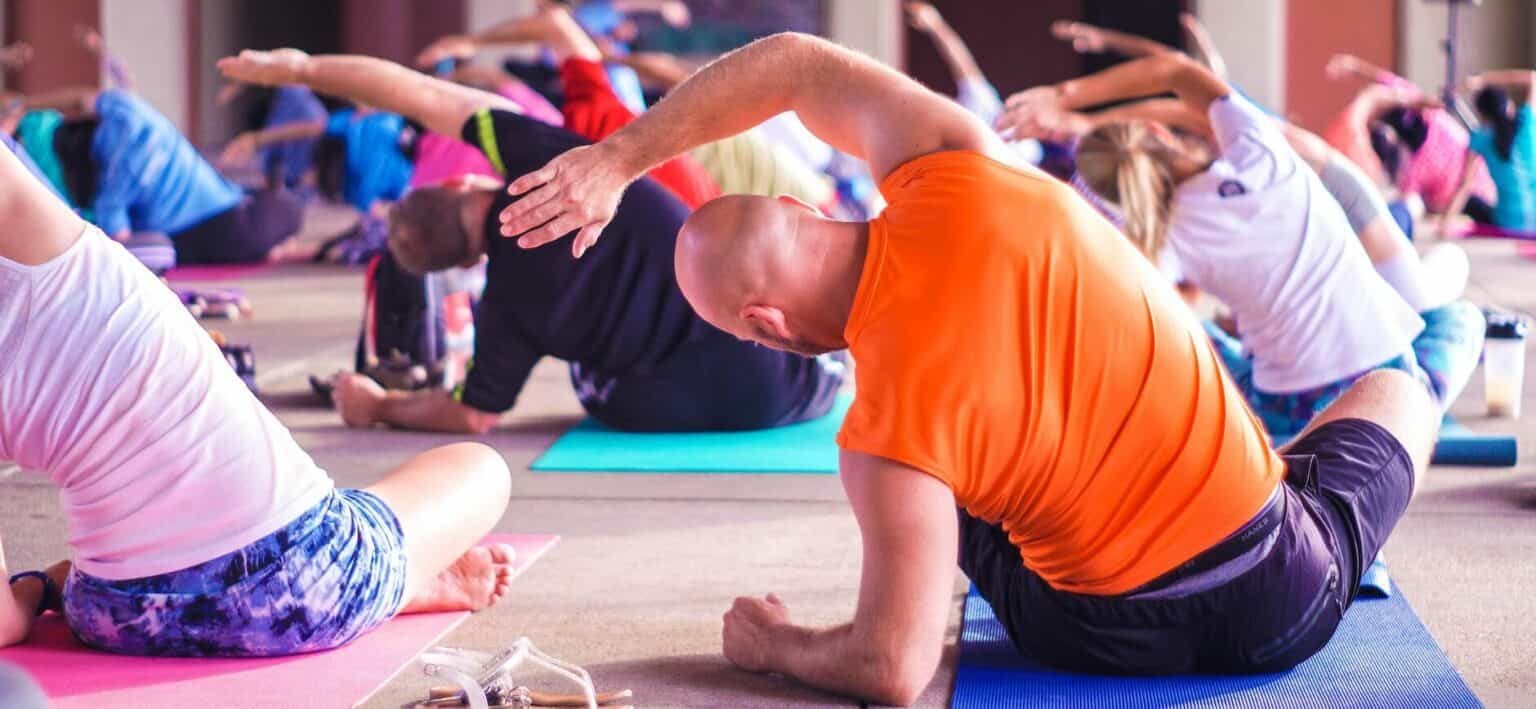In this blog, Ed Grosser provides a fantastic commentary on exercise and the beneficial effects for the prevention of various diseases (5 minute read).
We all know that exercise is good for you, but how much should we do?
And just how good is it?
Recently, Insight on SBS had a special called The Exercise Pill. One of the comments was that with all the benefits of exercise, if you could prescribe exercise in a pill, everyone would be demanding it from their GPs.
They discussed the role of exercise in the management of many chronic conditions such as osteoarthritis, depression and cardiovascular disease, as well as functional and aesthetic benefits.
So how much exercise should we be getting?
The World Health Organisation (WHO) recommends at least:
- 150 minutes of moderate-intensity or
- 75minutes of vigorous-intensity exercise per week.
This recommendation is based on of research findings looking at overall health and wellbeing.
Many studies have identified the threshold for the minimum amount of activity you need to do for a positive effect on the body but is this enough?
So, what happens if we do more than the minimum amount?
Some smart researchers have conveniently looked at this for us. They analysed 174 studies which included over 149 million years of peoples lives.
In this study ‘exercise’ is not only recreational exercise but also household, occupational or transport-related exercise.
This means there will be a big difference if your job requires you to be on your feet and lifting all day (i.e. labourer) compared to if you have an inactive job (i.e. desk job).
The WHO recommendation is 600 metabolic equivalent (MET) minutes per week.
That means that 150 min of moderate activity eg brisk walking is roughly 600 MET . Intense exercise eg running for 75 minutes is also 600 MET minutes. As you can see, this measure of MET minutes take into account the intensity of the exercise, not just the length of time.
Here are the results from these smart researchers, presented in table and graph form. It shows the effect of exercise in MET minutes per week on reducing the risk of 5 common and potentially life-threatening diseases.
| 600-3999 MET | 4000-7999 MET | >8000 MET | |
| Breast cancer | -3% | -6% | -14% |
| Colon Cancer | -10% | -17% | -21% |
| Diabetes | -14% | -25% | -28% |
| Ischaemic Heart Disease | -16% | -23% | -25% |
| Ischaemic Stroke | -16% | -19% | -26% |

You can see that approximately 3000-4000 MET minutes of activity each week gives the biggest reduction in the risk of all of the above diseases, much more than the 600 MET minimum.
So the question was ‘what happens if we do more than the minimum exercise?’
The answer is ‘bigger benefits in terms of reducing risk of these diseases.’
So what does this amount of exercise look like?
One day in a 3000 MET week might look something like this:
- 10minutes of climbing stairs
- 15minutes of vacuuming
- 20minutes of gardening
- 20minutes of running
- 25minutes of cycling for transport
How long you need to exercise before protective effects take place? That is unclear.
However, it is very clear the more exercise you can get in the week, the more your body will thank you!
It is never too late to start and something is better than nothing especially if you are currently inactive.
So how are you going to do this?
We know that it is important to exercise, and we know how much we need to do. The next step is to make it happen – that’s the hardest part.
(Knowing but not doing is the same as not knowing – editor’s note)
We know that getting motivated can be hard if you aren’t in the habit of exercising. Fitting exercise into your busy schedule can be a challenge too. For some people, playing a team sport is the way to go to stay motivated and accountable. Group exercise can be a fun and social way to increase your weekly exercise.
Our PhysioStrong groups are a great option, especially if you don’t know where to start with exercise, or if you are concerned about an injury.
Your initial physio assessment is gap-free. This assessment is to work out your strengths and weaknesses and what you want to achieve, so that the PhysioStrong sessions are going to suit you and your abilities.
PhysioStrong is designed to be fun but challenging – all you have to do is ask someone who is currently doing it.
If you mention this blog, you can get the first PhysioStrong group session free as well!
For more info on PhysioStrong, check out our page, or give us a call on 8356 1000.
Whatever you decide to do, start with a form of exercise that is suited to your current capabilities and something that interests you.
Remember, prevention is the best cure!














